Leodis McDaniel High School is where Northwest Noggin got its name!

Years ago, when we began visiting classrooms with our undergraduates and graduates to talk neuroscience and make art, we joined forces briefly with a federal grant program known as GEAR UP, volunteering in the summer at what was then called Madison High School in Portland Public Schools.
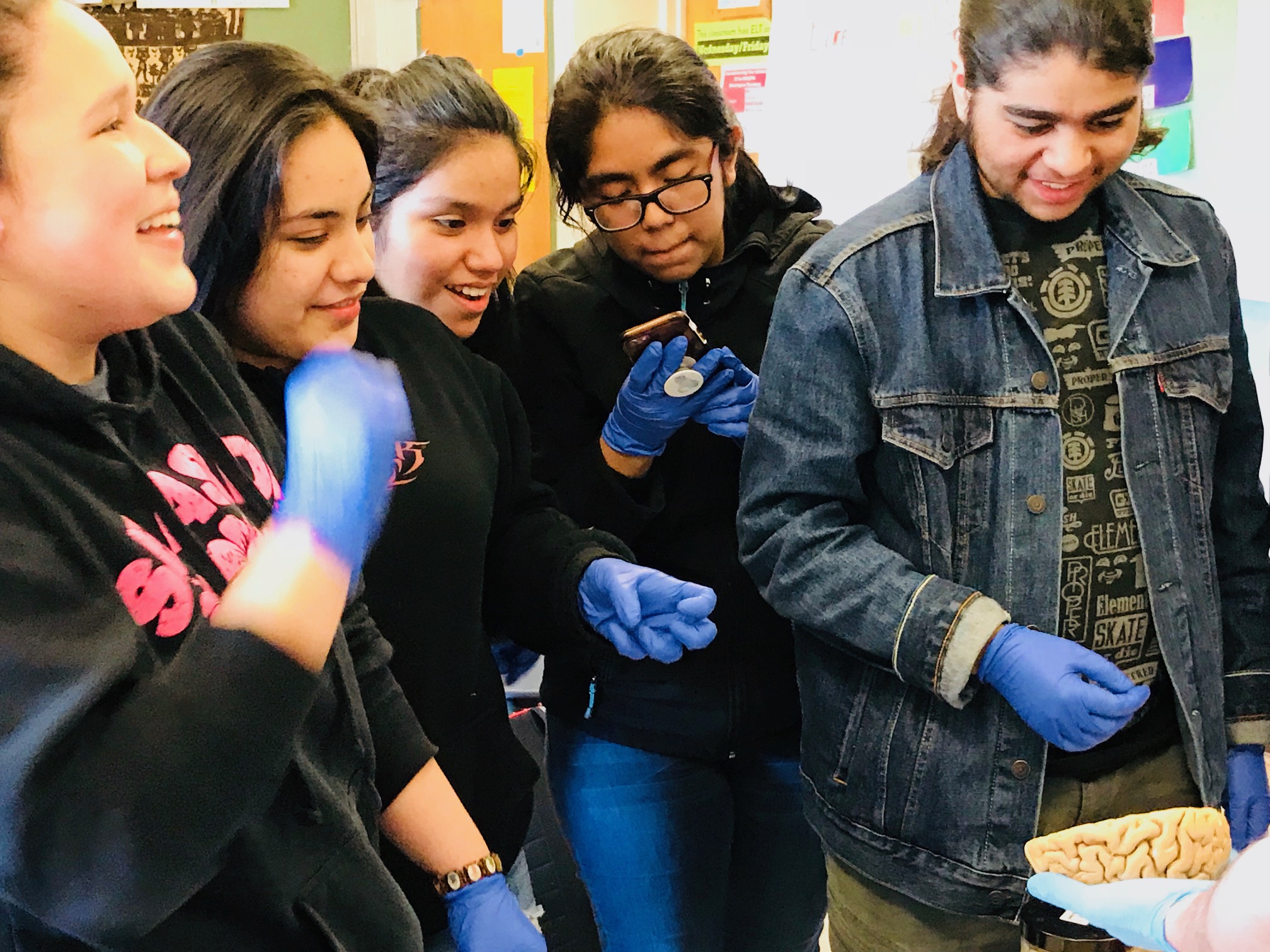
A local news reporter asked us – on camera! – what we called ourselves, and did we have a website?
We had no website, though we promised we’d send them a link by that afternoon.
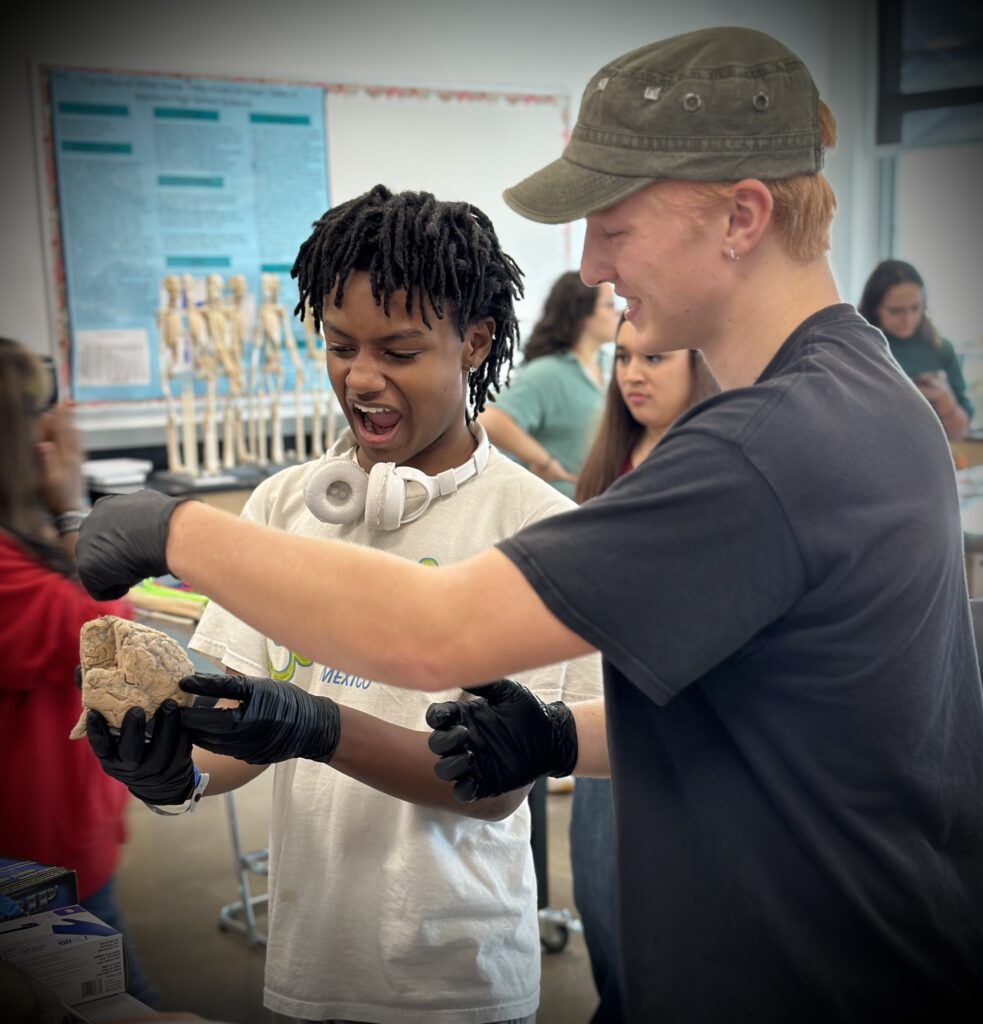
And for our name? “Well, we’re a Neuroscience Outreach Group, so NOG,” we replied, “…oh and we’re Growing In Networks, just like our brains! We’re Northwest NOGGIN!”
Fielding so many compelling and sometimes surprising student questions during outreach, and through extensive classroom teaching at universities, had honed our ability to think fast, share knowledge and more effectively engage. And with the help of our talented undergraduates, we even had a new nwnoggin.org website running (in rudimentary form!) in time for the evening news.
LEARN MORE: What is Northwest Noggin?
Teaching matters…to some
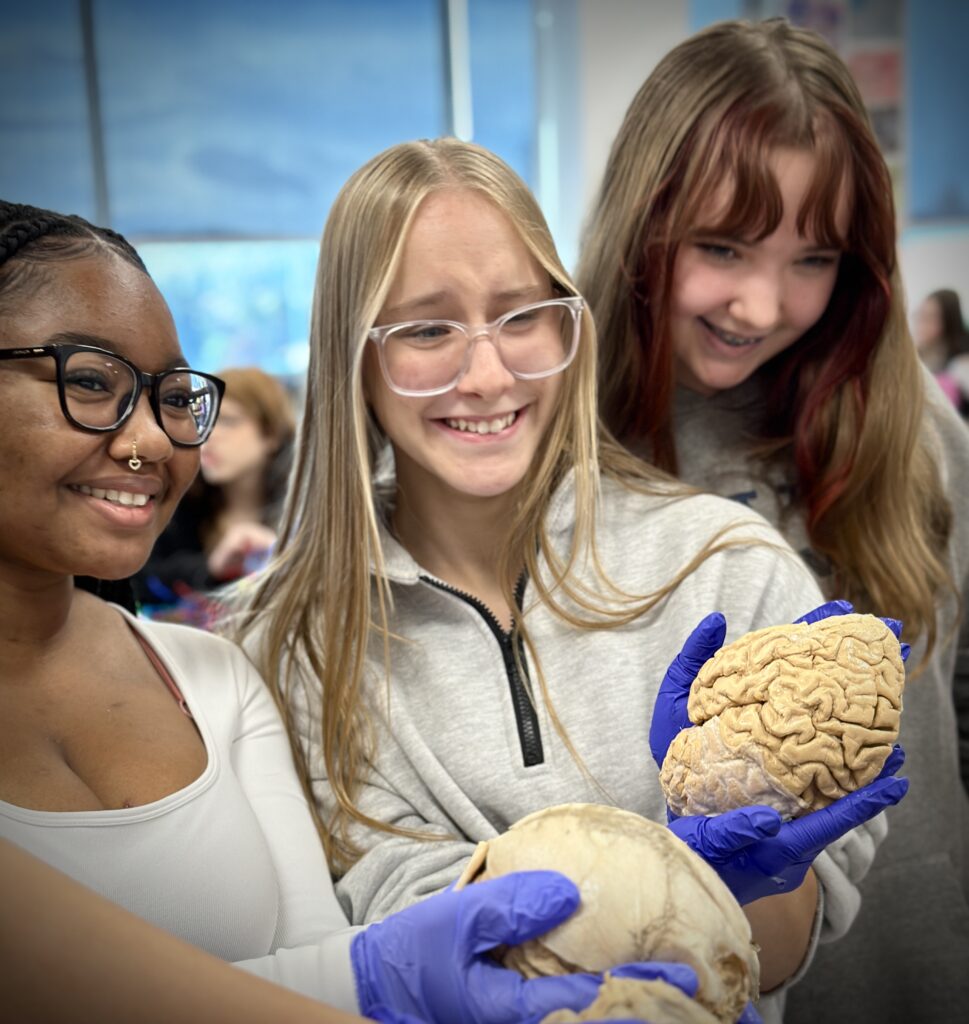
We have great respect for teaching, though we work at institutions which clearly don’t.
Portland State University, for example, just announced potential layoffs for non-tenure track faculty – the faculty who teach undergraduates. The teachers are targeted because they can be fired, unlike those with tenure whose jobs are protected, and who often complain about teaching, and rather minimally interact with students outside of their own graduate program.

“We find consistent evidence that students learn relatively more from non-tenure line professors in their introductory courses.”
-LEARN MORE: Are Tenure Track Professors Better Teachers?
LEARN MORE: PSU begins layoff process for nearly 100 faculty members, more expected
LEARN MORE: Board of Trustees faces criticism from faculty members
LEARN MORE: When it comes to teaching and tenure it is time to walk the walk
You’d think that undergraduate teaching would be an essential core mission of a public university, and that’s certainly part of the well-crafted language on the PSU website.
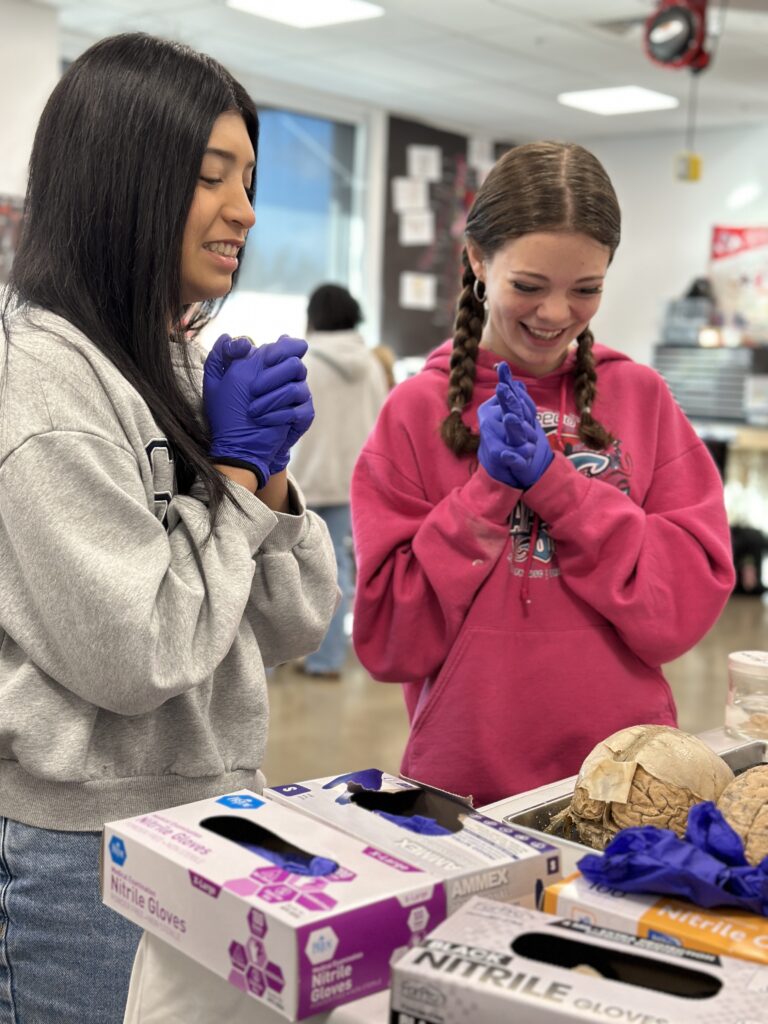
Though we’ve learned as educators on multiple campuses that large institutions tend to prioritize growth and preservation of their own organizational structure, no matter how ineffective, expensive or inequitable – over what they were initially created to do.

So in this world teachers get fired first.

LEARN MORE: Noggin @ White House Frontiers
LEARN MORE: A Brain without Glia
LEARN MORE: Noggin Takes DC
We love outreach!
So what a HUGE RELIEF it was to return to our Noggin origins and the mission we actually take seriously, and entirely as volunteers: to go places, listen, learn, explore exciting brain research, make art, improve our teaching – and let knowledge genuinely serve!
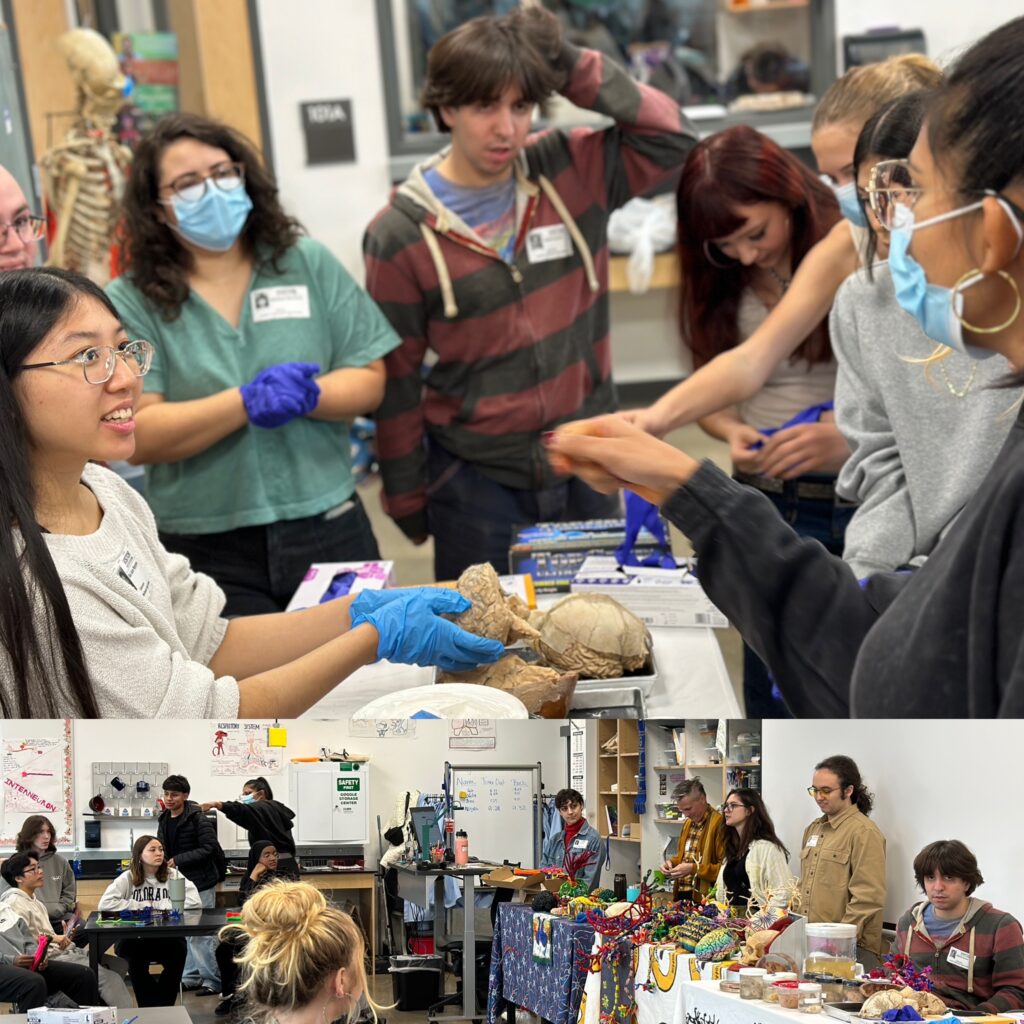
It was thrilling to re-visit the beautifully renovated Leodis McDaniel High School, and set up our noggins in Darshanpreet Gill’s popular Biomedical Science class! We’ve visited Ms. Gill’s classes before, too, to discuss the impact of the microbiome on mental health.

LEARN MORE: Your Inner Worm Bin
This time we welcomed Becky Martinez, a graduate of PSU and now a research assistant at Oregon Health & Science University, along with Gabe Guarin, Alyssa Showalter, Kayla Dagnino, Alex Heinrich, Ciara Fragoso, Becky Callos, Maha Mukhtar, Allan Gaither, Ann Bui, Lovey Zheng and Ashlyn O’Malley from Interdisciplinary Neuroscience at PSU.
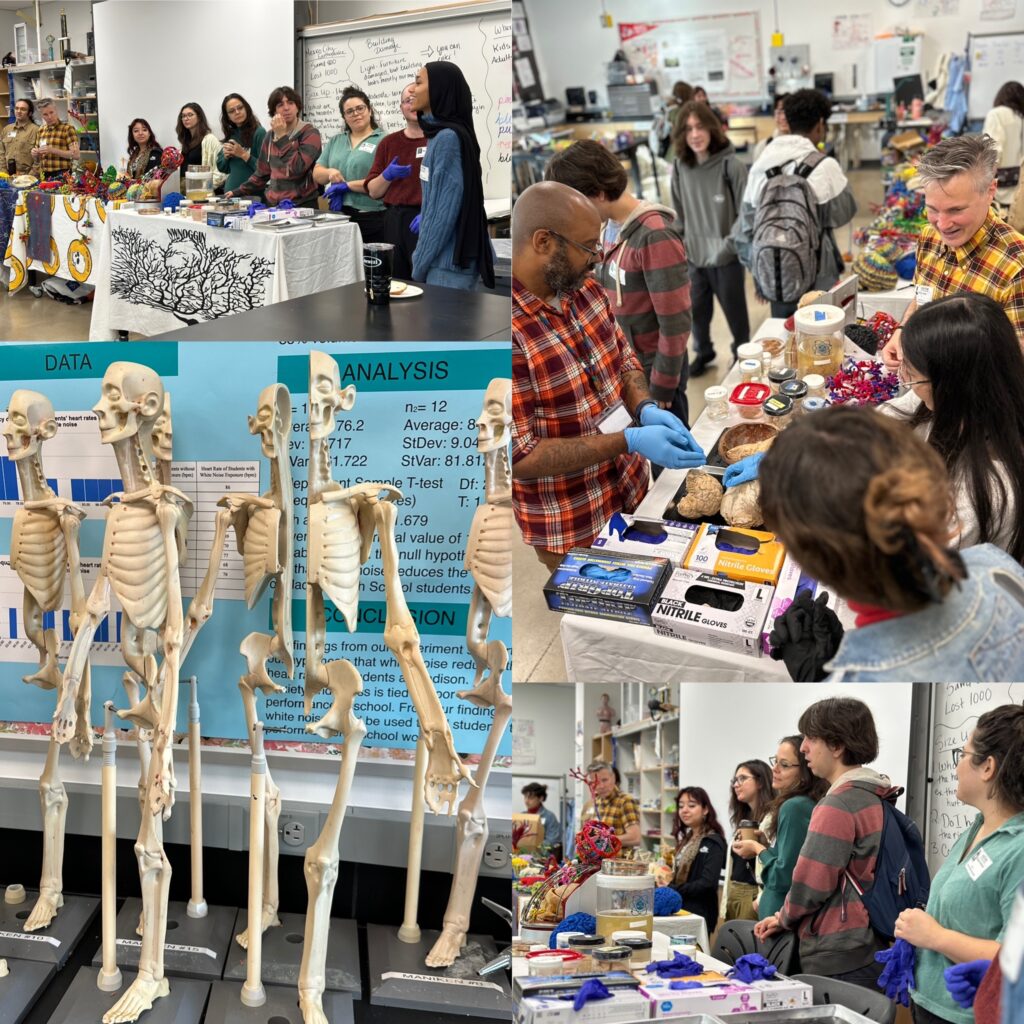
Ann, Lovey and Ashlyn are recent graduates of McDaniel!
Questions!
During our visit we heard some fascinating questions from McDaniel students.
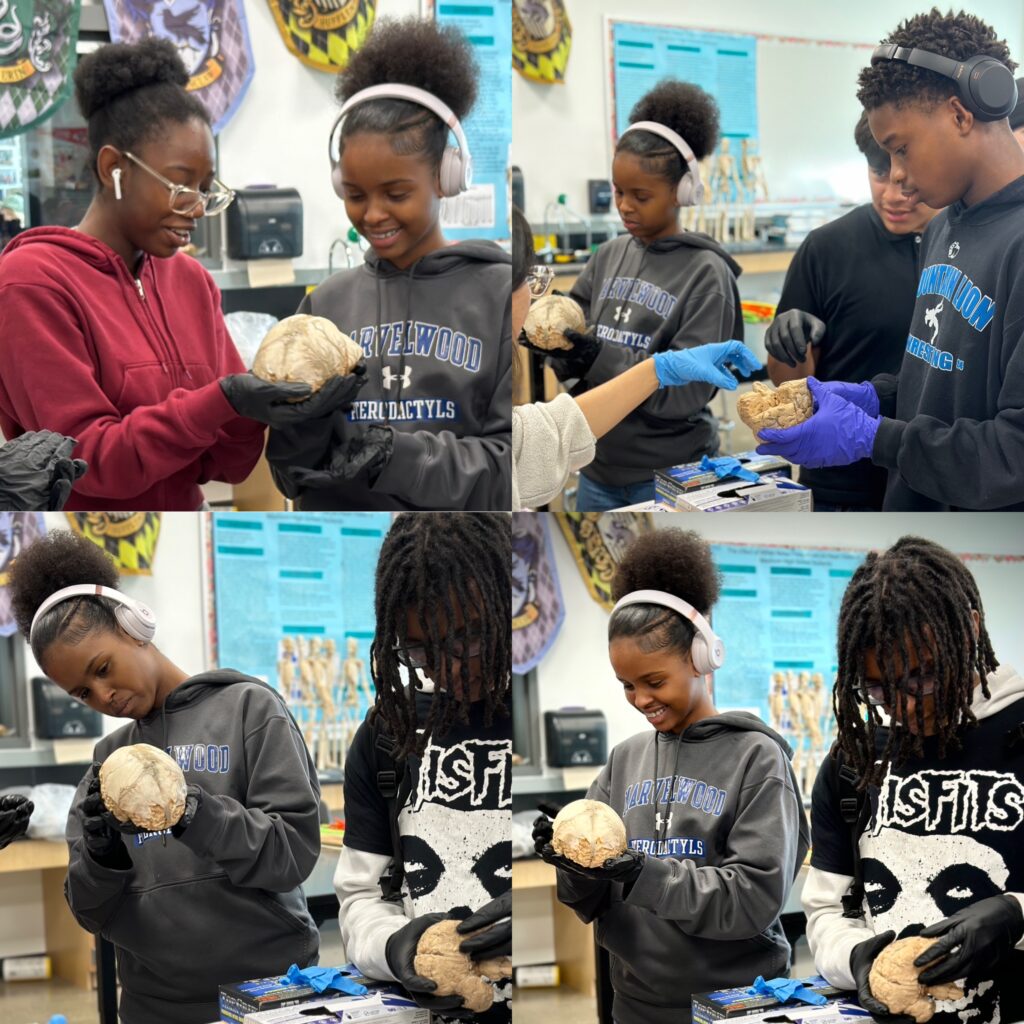
What causes ADHD?
Is all ADHD the same? Are there different kinds of ADHD?
What medication is used to treat ADHD, and does it work? Does it keep working?
Are there other ways to treat ADHD, that don’t involve drugs?
How does better sleep help the brain?
Many questions centered around Attention-Deficit/Hyperactivity Disorder (or ADHD). Several students were familiar with the drugs prescribed for ADHD, and some found them ineffective and unpleasant.
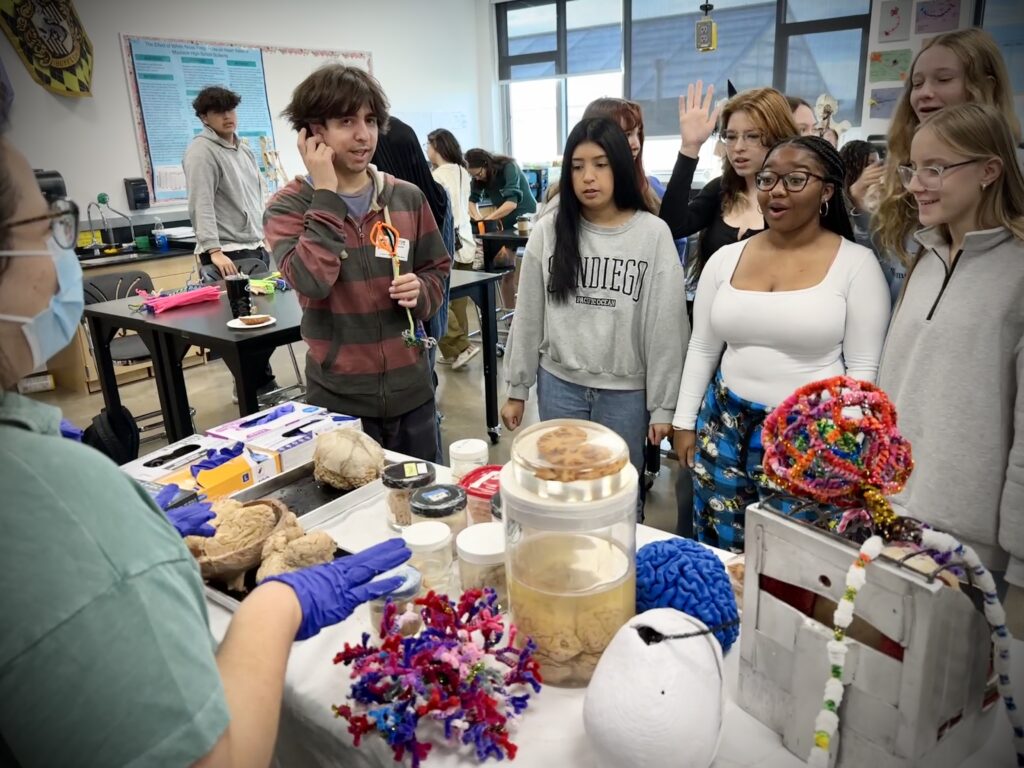
They were especially curious about non-drug options for addressing symptoms.
We talked about how new research (including data from the multi-center Adolescent Brain Cognitive Development study) finds several subtypes of structural and functional changes in the brain that might lead to the behaviors that fit a diagnosis of ADHD, and that these neurophysiological differences are important, suggesting potentially different therapeutic approaches.
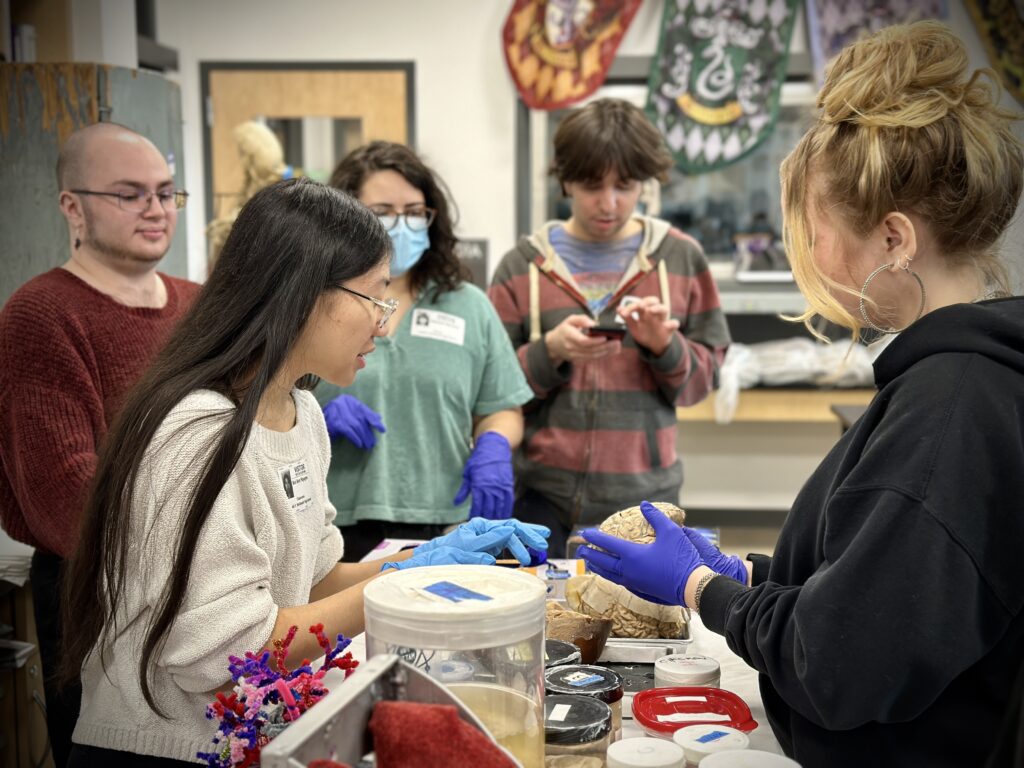
It’s like being diagnosed with fever (a symptom) – but what is actually causing the fever? You need to know mechanism. That really does matter when it comes to effective treatment!
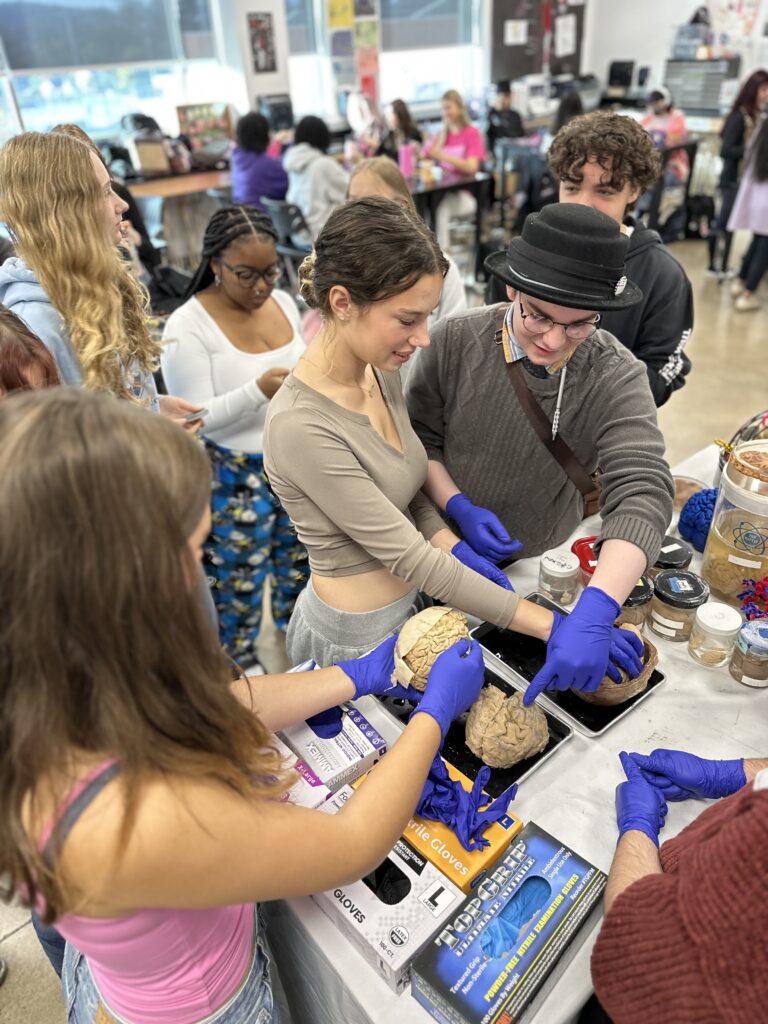
LEARN MORE: What is ADHD?
LEARN MORE: Adolescent Brain Cognitive Development Study (ABCD Study®)
LEARN MORE: The ABCD study: understanding the development of risk for mental and physical health outcomes
We also discussed how later school start times were particularly helpful in reducing ADHD diagnoses, and improving many aspects of mental health, as it offered young people the rest they needed to be properly energized for engaging those developing brain networks that are important for maintaining attention, social decision making and more.
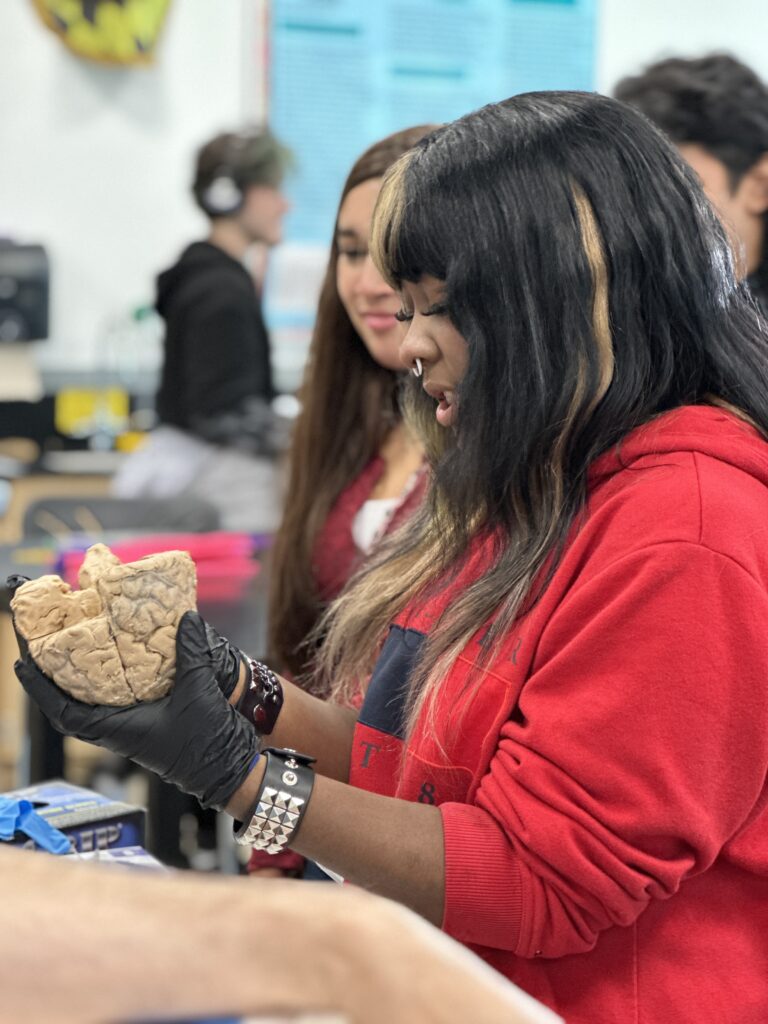
LEARN MORE: Hey Vancouver: Let Kids Sleep!
LEARN MORE: Schools shift as evidence mounts that later start times improve teens’ learning and well-being
What types of jobs are available in neuroscience?
Can studying neuroscience help you work in different fields?
Absolutely! Neuroscience relates to so many different fields, including public policy, business, speech and hearing sciences, psychology, biology, education, music and the arts!
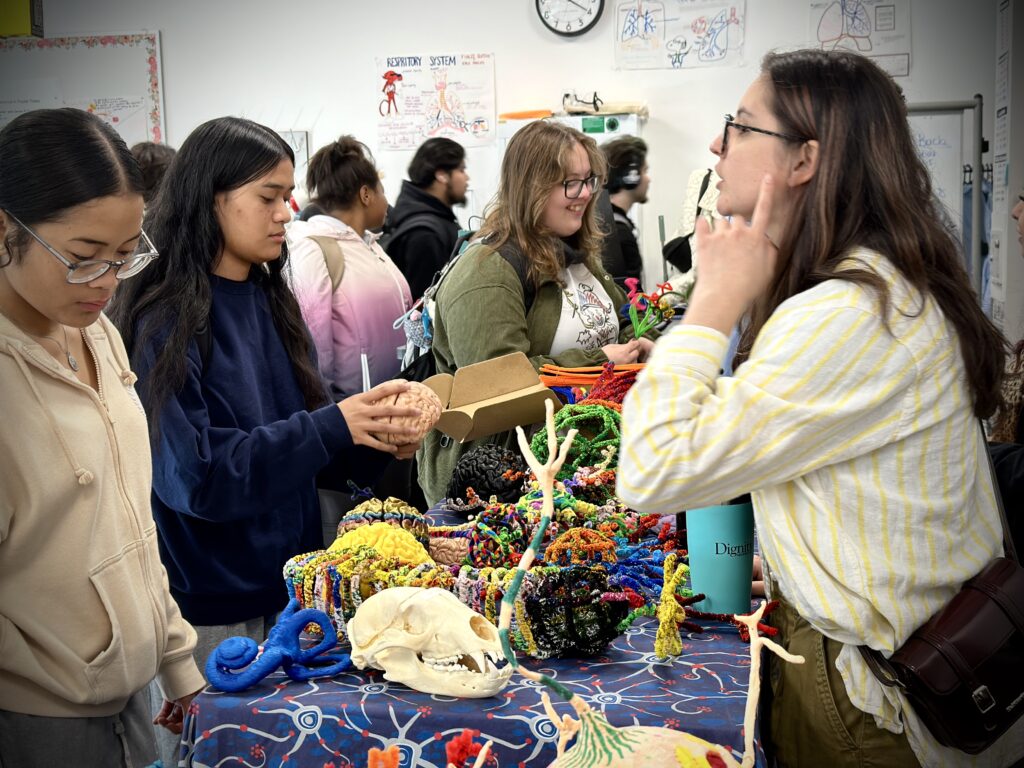
LEARN MORE: Interdisciplinary Neuroscience Minor at PSU
LEARN MORE: Neuroscience Careers (Society for Neuroscience)
LEARN MORE: Careers in Neuroscience
LEARN MORE: Interdisciplinary research is the key
LEARN MORE: Links between Arts, Learning, and Neuroscience
LEARN MORE: Molecular Neuroscience in the 21st Century: A Personal Perspective
How long does it take to become a neurosurgeon?
How do I get to study neuroscience?
How expensive is it to become a graduate student in neuroscience?
Are there people who can’t see in any color?
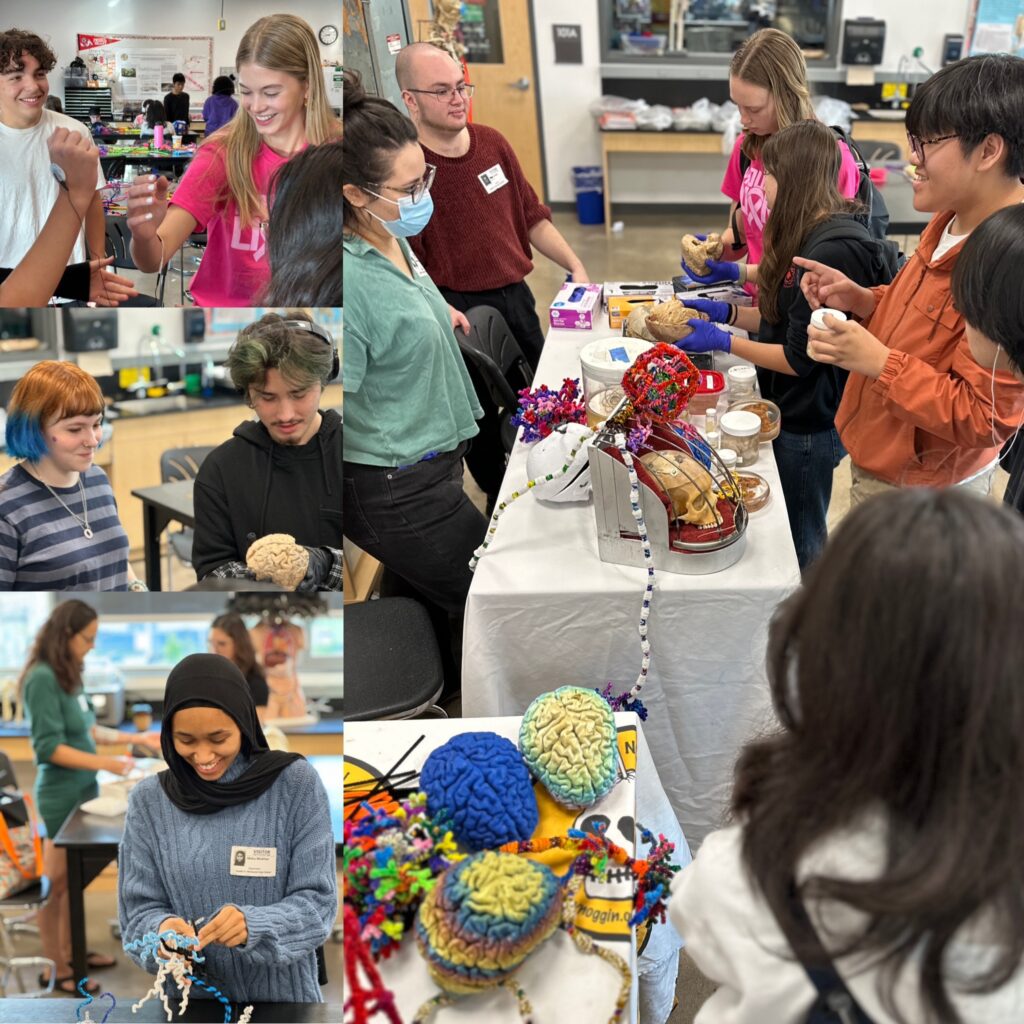
LEARN MORE: Achromatopsia: Genetics and Gene Therapy
LEARN MORE: Color on the Noggin!
How do your genes and your own life experience affect each other?
Is it harder to learn a language as an adult? And if so why?
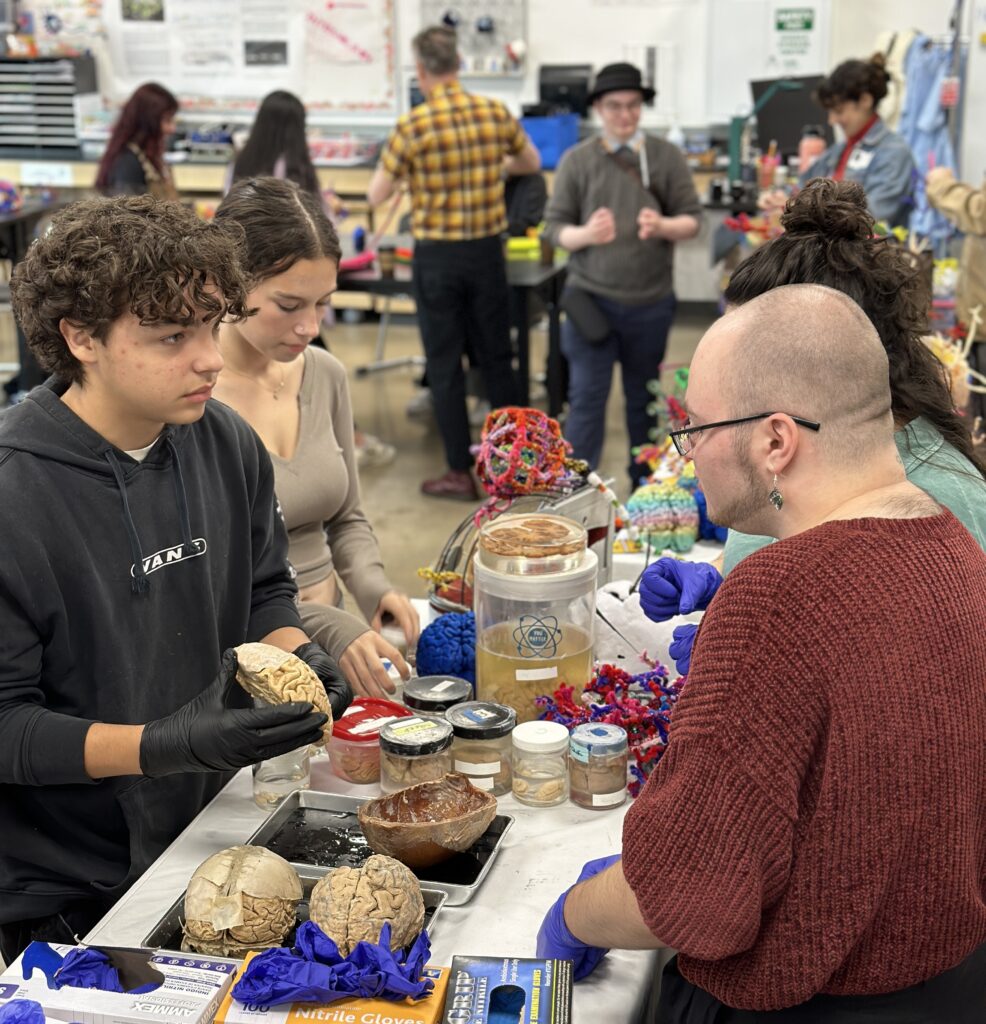
What is consciousness – and do we know anything about where it happens in the brain?
Why are some things we do or experience conscious, but other things aren’t?
Does a bigger brain mean that you’re smarter?
Do you recommend any books or podcasts about neuroscience?
We do! Some are listed here!
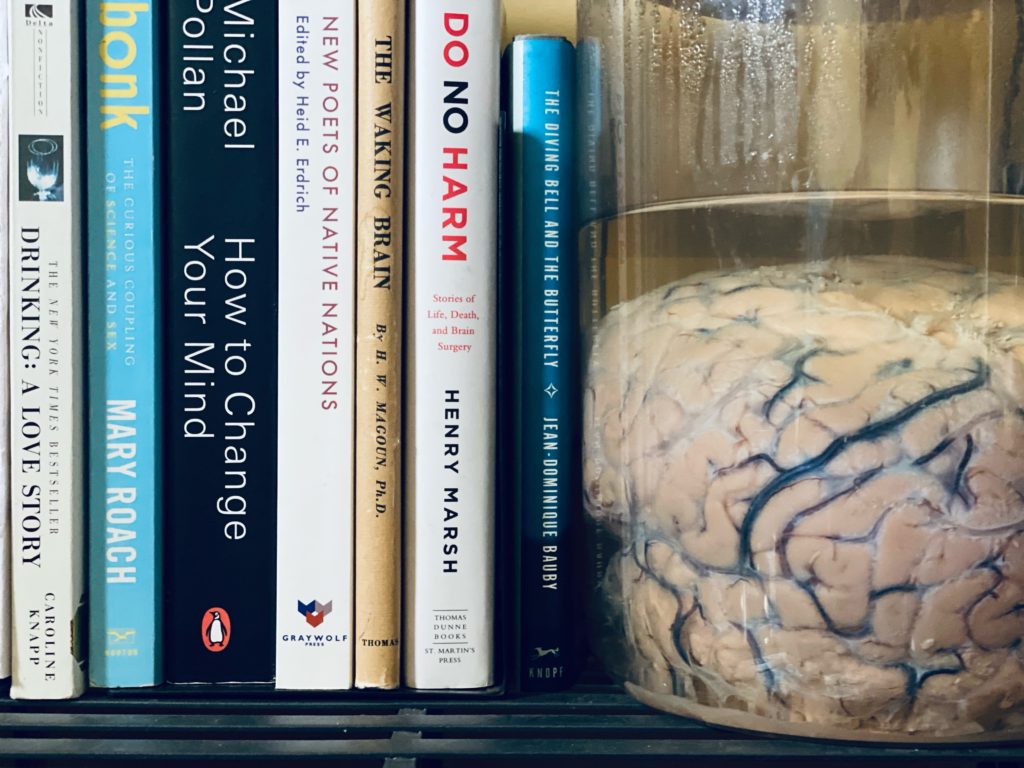
LEARN MORE: Inspiring books on brains & art
How do people still feel their missing limbs?
Can a prosthetic hand make a “phantom” limb disappear? Can it replace it?
Missing limbs often provoke “phantom” sensations – it can feel like the limb is still there!
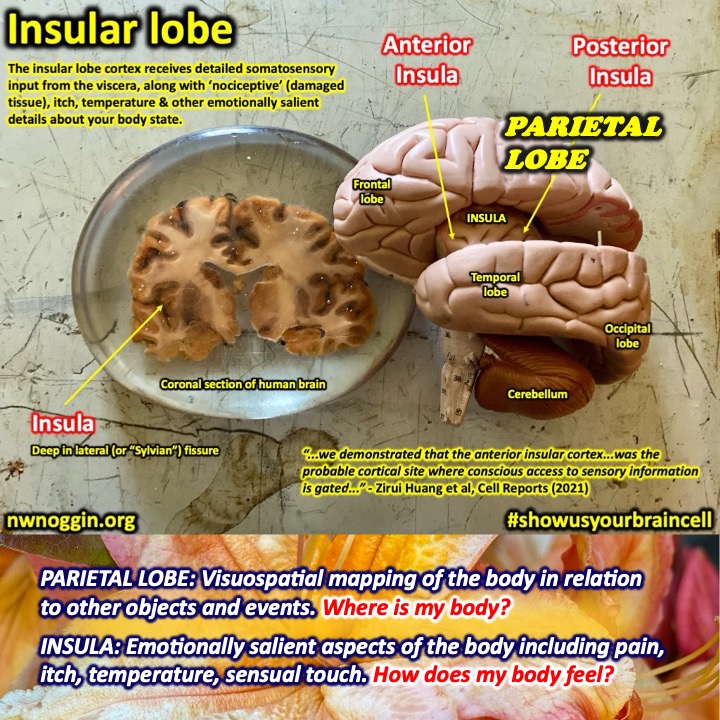
That’s because perception of our body is deeply embedded in the networks of linked neurons in the brain. The body has sensory receptors that respond to touch, pressure, injury and warmth, but it’s our brains that consciously map and feel. A touch or movement on neighboring mapped regions of the body (for example, on your face after you’ve lost an arm) can drive activity in these brain areas, maintaining your sense of the limb. Intended movements can incorporate it into our conscious experience as well.

What’s going on in those pics?: Brain Hacking is Electric!
LEARN MORE: Phantom limb syndrome: a review
Post-amputation phantom limb pain (PLP) is also common, and can be hard to treat.
Losing a limb can be a violent and painful experience – and our sense of our body is intimately bound up with the interacting networks of memory, prediction and perception that let us feel intact and whole.
LEARN MORE: Recent advances in understanding and managing phantom limb pain
LEARN MORE: Clinical updates on phantom limb pain
While we crafted neurons, explored the electrical nature of information in muscles and nerves, and considered so many exciting research questions over noggin specimens, we thought about the teaching faculty now threatened at Portland State.
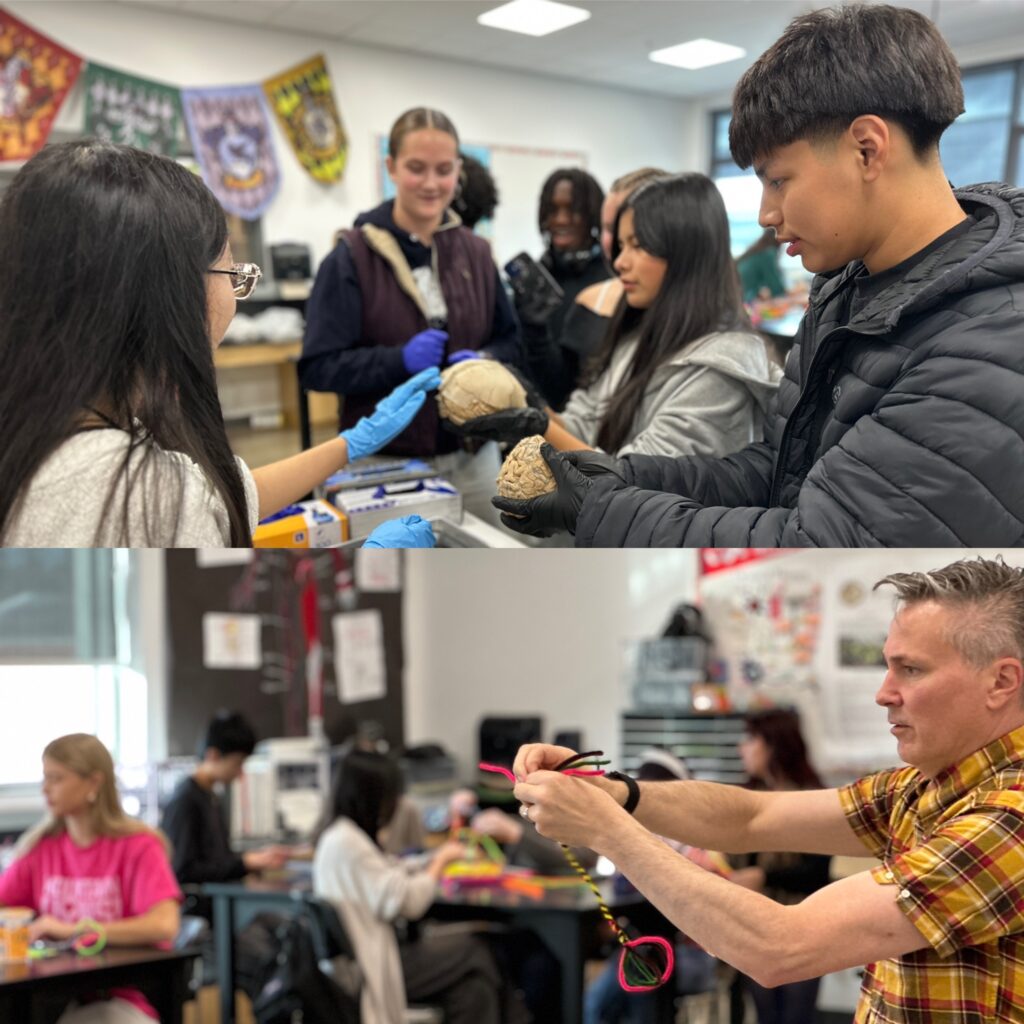
Casting off people who educate undergraduates is like losing a significant limb. It’s painful and memorable, definitional and deeply felt. What institutional mechanisms have led here?

If not teaching, what is a university for?
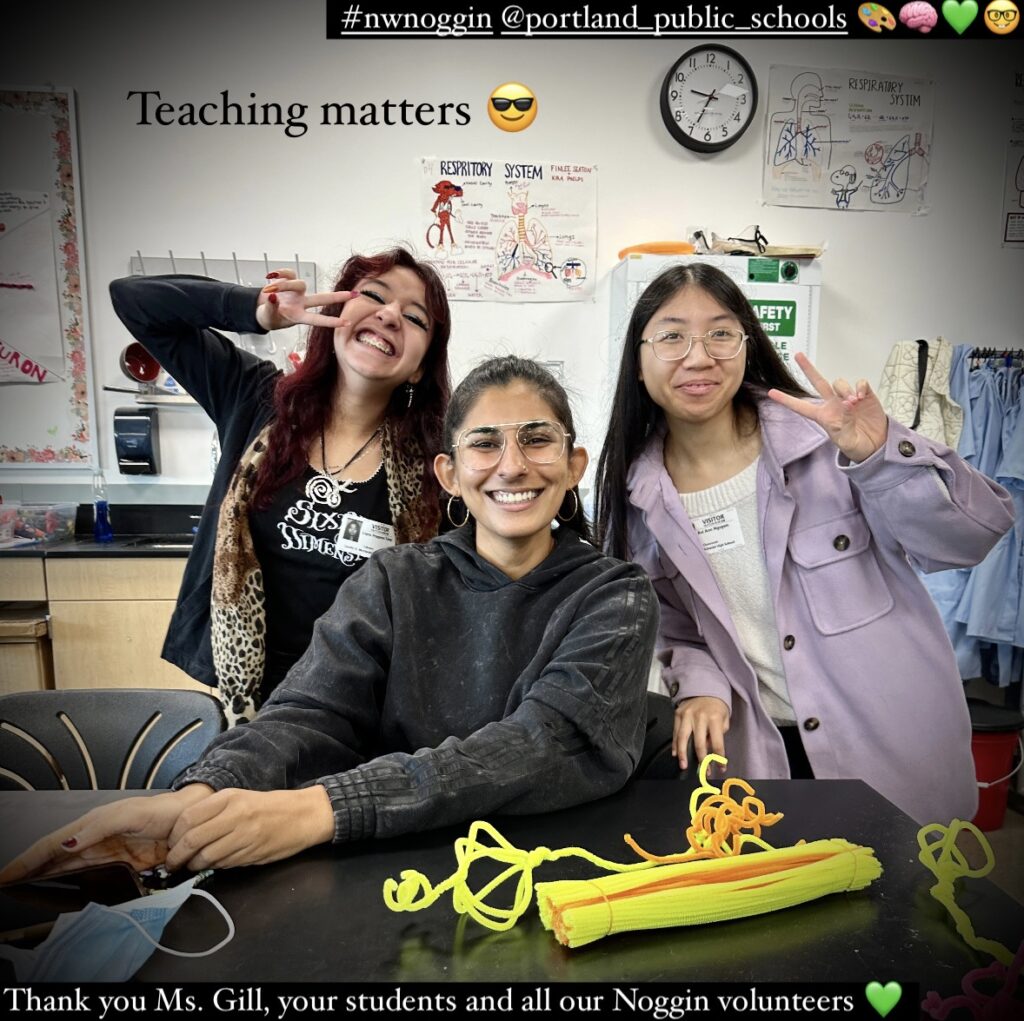
Huge thanks to Darshanpreet Gill and her students for welcoming all our volunteers (students and faculty) to a wonderfully enjoyable, productive and hearteningly diverting day at school.


